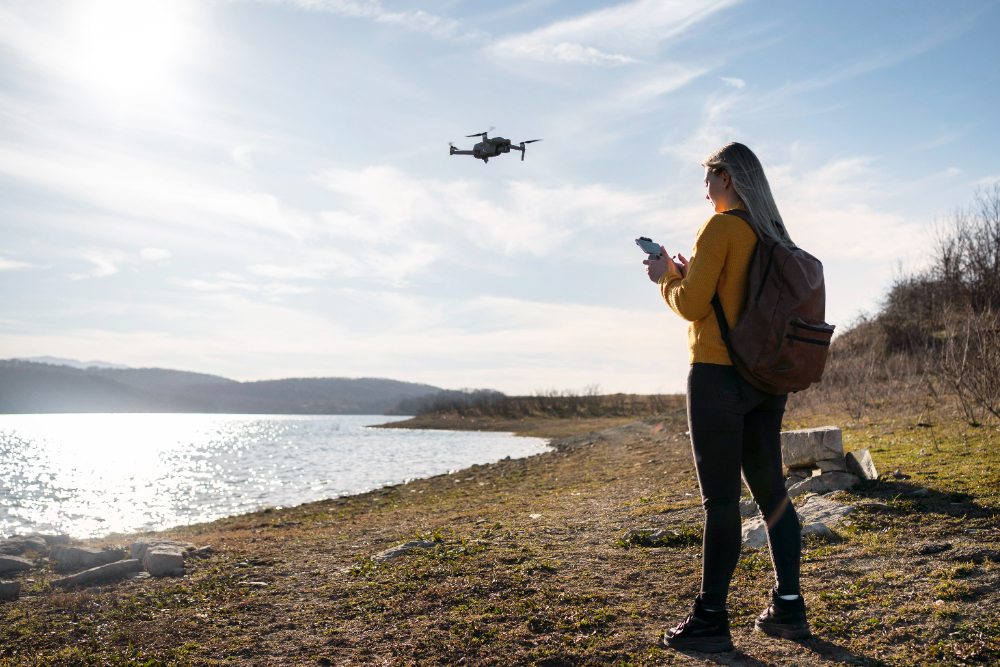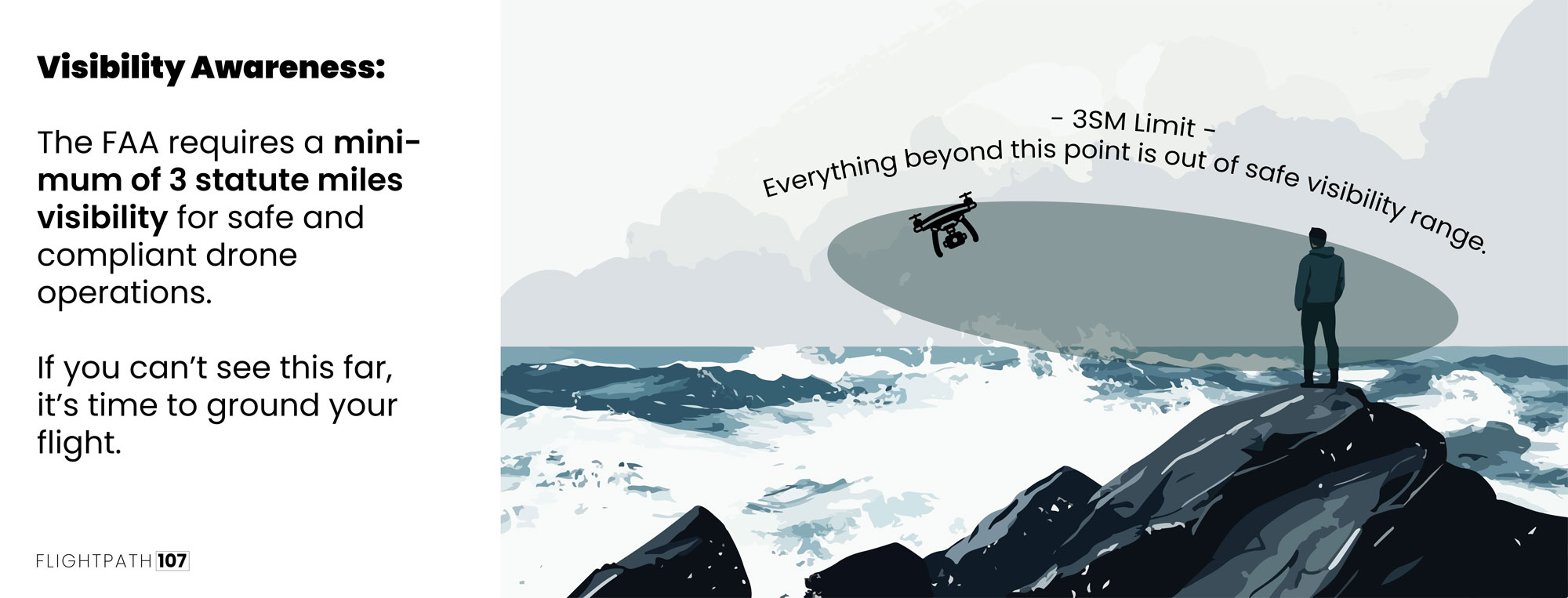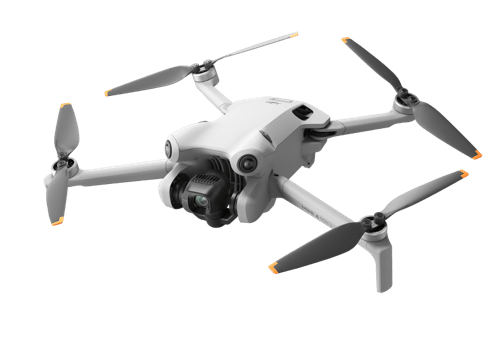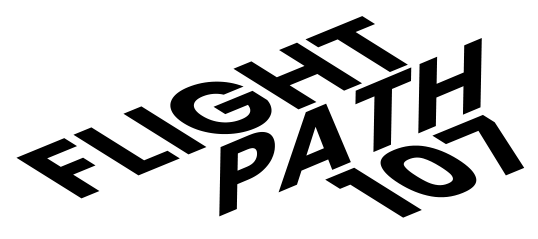
Introduction
Small Unmanned Aircraft (UAs) operating under Part 107 regulations are subject to operating limitations, including specified speed restrictions, minimum cloud clearance and visibility requirements, as well as structural altitude limitations, ensuring safe and responsible drone operations within the National Airspace System.
Exam Prep
On the Part 107 exam, you’ll encounter images of sectional charts and be asked to identify all kinds of information
4 Key Operating Limitations
Part 107 sets specific rules for flying small unmanned aircraft systems (sUAS) commercially. Understanding these limitations is key to ensuring safe, legal operations and compliance with FAA regulations.

Maximum Speed: 87 knots (100mph)
The sUAS is not allowed to fly faster than 87 knots (100 mph) ground speed.
This rule helps pilots maintain control and stay aware of their surroundings while they’re up in the air.

Minimum Visibility: At least 3 statue miles.
Visibility refers to the distance a pilot can see and identify objects on the ground and in the airspace. This means that the remote pilot must be able to see the drone and any other aircraft in the vicinity clearly.
During sUAS operations, visibility must be at least 3 statute miles.
This ensures the crew can see the aircraft clearly and navigate safely through the airspace.

Field Examples:
- During your preflight briefing, you find that visibility in your area is reported as 2 statute miles. Can you legally fly your sUAS for this your mission?
- No, because visibility is only 2 statute miles, which is below the required minimum of 3 statute miles.
- During your preflight briefing, you find that visibility in your area is reported as 6 statute miles. Can you legally fly your sUAS for this mission?
- Yes, because visibility is 6 statute miles, which is above the required 3 statute miles.

Cloud Clearance: 500 feet below, 2,000 feet horizontally
The sUAS must stay at least 500 feet below a cloud and 2,000 feet horizontally away from a cloud.
This rule keeps the aircraft visible to the crew and reduces the chance of flying into clouds that could block their view. It’s all about keeping the flight safe and the drone in clear sight.

General Altitude Restriction: No higher than 400 ft AGL
The sUAS cannot fly higher than 400 feet above ground level (AGL), unless it’s within a 400 foot radius of a structure and stays below the structure’s topmost point.
This rule keeps flights safe by avoiding altitudes that might affect the pilot’s visual line of sight.

Tower Inspection Altitude Restrictions: Within a 400 ft radius of structure’s topmost point
The sUAS can fly within a 400 foot radius of a structure’s topmost point
For example, if you’re inspecting a 200-foot tall cell tower, your sUAS can operate up to 400 feet above the tower’s peak and within a 400-foot horizontal radius around it, ensuring safe and effective inspection while maintaining regulatory compliance.
Examples in the Field
Below are 4 real-life examples where drone pilots need to be aware of these regulations:
Speed Regulations | Anti-Poaching Wildlife Monitoring:
A drone operator is tracking wildlife in a national park and hears about possible poachers. Even though it’s urgent, the pilot sticks to the 87 knots (100mph) speed limit. This helps the operator stay in control and fly the drone safely through the park.
Visibility Regulations | Coastal Search-and-Rescue Mission:
A drone pilot is on a search-and-rescue mission along a rocky coastline when thick fog reduces visibility to less than 3 SM miles. To stay within legal limits and ensure a successful rescue, the pilot decides to wait until the fog clears and visibility improves.
Cloud Ceilings | Crop Harvest Inspection:
A drone pilot is inspecting crop fields for pests when they notice a cumulus cloud forming overhead. To follow the rules, the pilot adjusts the drone to stay 500 feet below the cloud and 2,000 feet away horizontally, ensuring safe and compliant operation while continuing the inspection.





